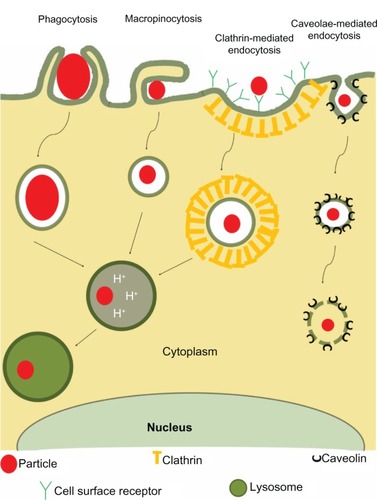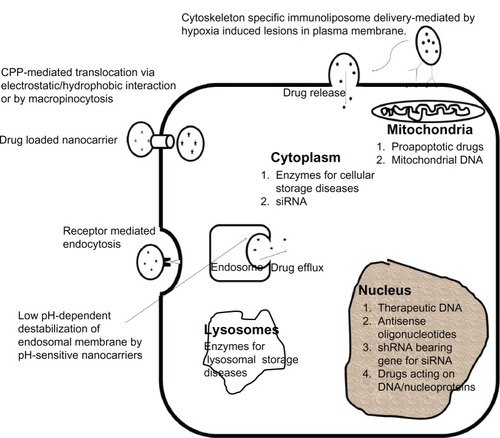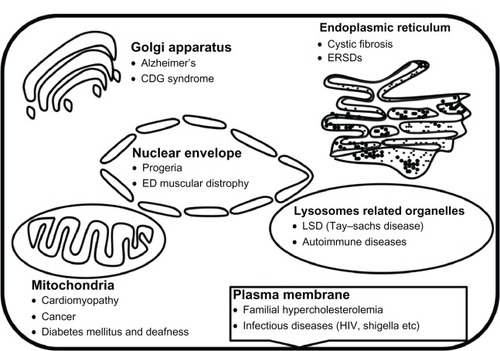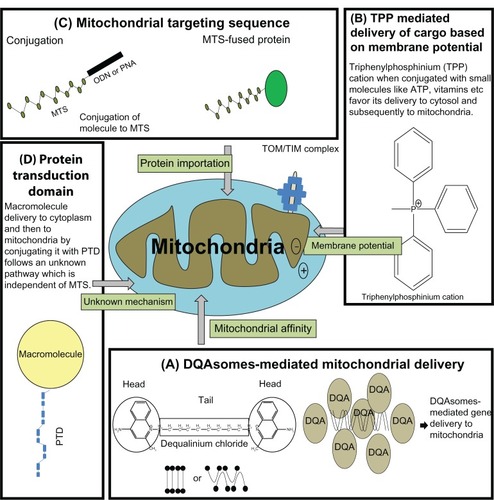Figures & data
Table 1 Types of endocytosis
Figure 1 Four major types of endocytosis.
Abbreviation: H+, hydrogen ion.

Figure 2 Intracellular drug delivery by various strategies to cytoplasm, nucleus, mitochondria, or lysosome and the targeting moieties to these organelles.

Figure 3 Diseases associated with specific cell-organelles.

Figure 4 Current approaches being used for successful mitochondrial specific delivery.
Abbreviations: ATP, adenosine triphosphate; TOM/TIM, translocse of the outermembrane/translocase of the innermembrane; DQA, dequalinium; DQAsomes, dequalinium based liposome-like vesicles.
